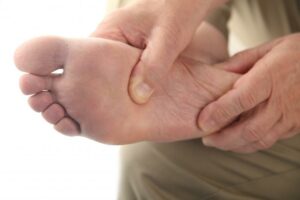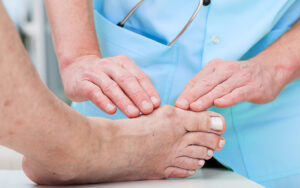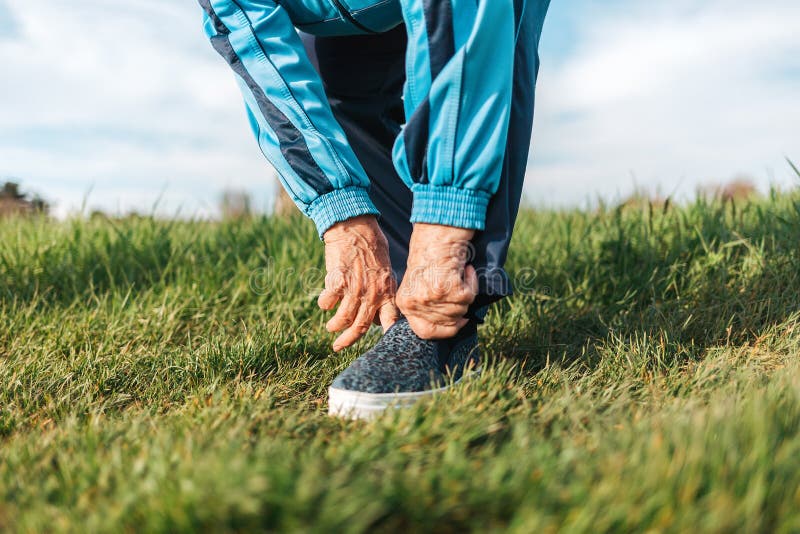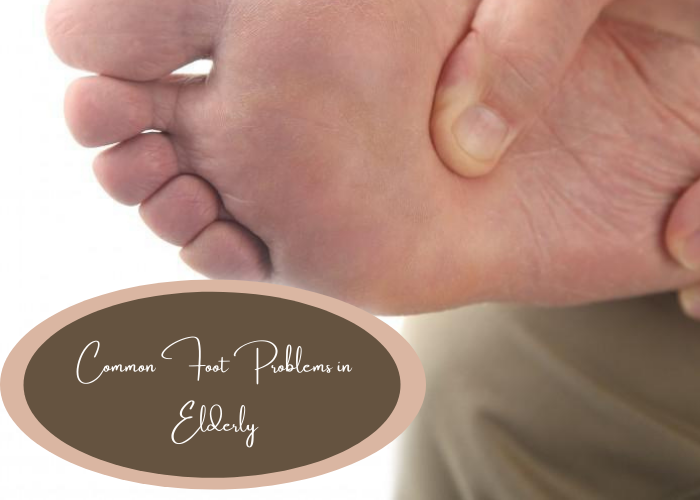Contents
Common Foot Problems in Elderly
As you age, the lower limbs become more susceptible to infections and injuries, causing various foot problems. With advancing age, these problems can become worse to make you immobile and housebound. Here we will discuss common foot problems in the elderly, symptoms, and prevention measures!
Our feet are essential parts of our bodies as they support the entire body’s entire weight and seriously take a lot of abuse. Common foot problems in elderly, such as hammertoes, corns, bunions, calluses, etc., make it harder for them to carry out daily activities. Moreover, the chances of falling also increase as it becomes difficult to keep the body balanced.
Foot disorders and pain are common foot problems in elderly people. Age-related issues like fat pad atrophy, bony deformities like bunions and hammers, toenail disorders, heel pain, and ingrown are some of the most common problems that severely affect older people’s independence and mobility. That is why elderly foot care should be your topmost priority.
Non-surgical procedures and preventive measures by podiatrists can help prevent these problems and lead you to mobility and healthy feet.
Structure of the Human Feet
 Human feet have 26 bones, 33 joints, and more than a hundred muscles, tendons, ligaments, and nerves. These all are essential parts that work together to support the body weight, keep the body balanced, absorb shock while walking, and help to push the body forward. Averagely, our feet undergo around 5,000 steps daily. Since they are small compared to our body, they take a lot of abuse and tons of weight daily.
Human feet have 26 bones, 33 joints, and more than a hundred muscles, tendons, ligaments, and nerves. These all are essential parts that work together to support the body weight, keep the body balanced, absorb shock while walking, and help to push the body forward. Averagely, our feet undergo around 5,000 steps daily. Since they are small compared to our body, they take a lot of abuse and tons of weight daily.
One of the significant issues of common foot problems in elderly people is wearing uncomfortable shoes. About 5 out of 8 people over the age of 65 wear shoes that offer no support or protection. If you have any foot problems, you should consult with your podiatrist to diagnose and effectively treat these problems.
Key Points

- The change of shoes or cushioned insole may prevent or treat some common foot problems in the elderly.
- A classic symptom of Morton’s neuroma is burning or neuritic pain radiating into the 3rd or 4th
- Suspected diabetes or rapid progression of deformity requires urgent orthopaedic surgeon treatment.
- Pain radiating down to the foot or generalized numbness caused because of nerve root compression or peripheral neuropathy.
- Thick or crumby nails is a common foot problem in the elderly and a clear symptom of fungal nail infection that requires direct microscopy.
Common Foot Problems in Elderly
1. Bunions (Hallux Valgus)
If you notice a misaligned bone or bony growth near the small toe or big toe base, it means you are suffering from bunions. In this case, this may lead the big toe to bend abnormally to the small toe. It is a painful situation that grows slowly. One of the significant issues that worsen this situation is wearing narrow and tight shoes, such as high heels, which often happens to women.
Moreover, it can run into families as well. Wearing tight shoes increases the pressure on the metatarsophalangeal, where the foot bones meet the big toe bone. Other causes that could develop bunions include polio and rheumatoid arthritis.
Symptoms
People who are suffering from bunions may suffer from one or more of the following symptoms:
- Tenderness around or near the big toe.
- Having trouble moving the big toe.
- Pain or numbness in the big toe when walking or running.
- Bump on the side of the foot.
- Corn or callus below the big toe.
Prevention
The use of conservative measures can improve the situation. In this regard, wearing comfortable shoes, fit properly, and don’t have high heels may help. Another option to prevent the bunion from developing is buying a bunion pad from a shoe or drugstore. For inflammation, using an ice pack covered with a cloth for at least ten minutes can treat the inflammation.
Moreover, consulting with a professional podiatrist can also prevent it. They may prescribe custom-made shoes or a splint to straighten the big toe. However, if the methods mentioned above don’t improve the condition and constantly cause pain, it is recommended to have surgery.
2. Calluses and Corns
The development of calluses and corns is another common foot problem in elderly people. If you notice thickened, dead, or yellowish skin on toes or soles, it means you are suffering from calluses or corns. These spots help to protect the skin and force the body to stop developing blisters.
However, calluses and corns are a little different from each other. Corns are a bit smaller than calluses, having a hard centre surrounded by inflamed skin. They generally develop on feet that do not bear weight, such as sides of the toes or between the toes. On the flip, calluses can rarely cause pain and usually develop on the soles, such as under the heels, palms, or knees.
Symptoms
People having calluses and corns may notice:
- Dry, flaky, or waxy skin.
- Pain or tenderness under the skin.
- Thick or rough area of the skin.
- A hardened and raised bump.
Prevention
There is a different preventive measures that may help to reduce or prevent calluses and corns. Firstly, stop wearing ill-fitted shoes since tight shoes can compress your feet. Also, avoid wearing loose-fitted shoes as your feet may rub and slide against them. Moreover, wearing shoes without socks can also cause friction.
If you suffer from calluses and corns, wear shoes that keep your feet comfortable and offer plenty of room to your toes. Wearing felt pads, bandages, or nonmedicated corn pads over areas that rub against the shoes can help prevent the problem. Another tip to prevent this problem is using toe separators or some wool between the toes.
3. Hammertoes
Hammertoes are another common foot problem in elderly people. In this case, one or both joints of the toes bend abnormally, that causes pressure on the toe when wearing footwear. They generally start as a mild deformity and can become worse over time. In the beginning, hammertoes become flexible, helping manage symptoms with noninvasive measures.
However, if left unnoticed, they can become more rigid and may stop responding to non-surgical treatment. Since hammertoes are naturally progressive, they require immediate attention as they cannot improve without any intervention.
The primary cause of developing hammertoes is unbalanced muscle or tendon, which forces the toe to bend because of the neurological or structural changes in the foot. The ill-fitted footwear may also aggravate them.
Symptoms
Some common hammertoes symptoms include:
- Pain in the affected toe when wearing the shoe.
- A buildup of skin (calluses and corns) on the toe.
- Redness, burning sensation, or inflammation.
Prevention
There’s a range of preventive measures that can help to prevent hammertoes. However, the treatment method that you podiatrist choose will depend on the severity of the problem. Some non-surgical treatments that you can take include changing shoes, medications, and the use of orthotic devices.
Try to avoid short footwear, have high heels and pointed toes. Choose comfortable footwear and have offer deep and roomy heels and toe box. Medications that can help prevent hammertoes include oral non-steroidal and anti-inflammatory drugs like ibuprofen.
Orthotic devices are also helpful in controlling the muscle/tendon imbalance. Sometimes corticosteroid injections are also prescribed by the surgeons to ease inflammation and pain caused by hammertoes.
4. Diabetic Neuropathy
Diabetic neuropathy is also a common foot problem in elderly people, especially for those who have diabetes. However, it is not just one condition but a set of conditions that cause discomfort and pain to the feet. Long-term high blood sugar levels are one of the major causes of diabetic neuropathy.
The problem develops slowly and may take decades. The early symptoms of having diabetic neuropathy include numbness, pain, tingling, or weakness in the feet. It becomes severe when you are unable to feel any discomfort and an ulcer start developing.
Neuropathy symptoms appear gradually. In some cases, the first type involves damaging the nerves of the feet. In this case, you may feel painful “pins and needles” in your feet. However, its symptoms vary depending on affected areas and the severity of the problem.
Symptoms
Some common signs of different neuropathy types include:
- Loss of touch sensitivity.
- Pain or numbness in the feet.
- Coordination Inability when walking.
- Burning sensation in feet at night.
- Wasting or muscle weakness.
- Feeling dizziness when standing.
- Decreased or excessive sweating.
Different types of diabetic neuropathy include:
Peripheral neuropathy: It is the most common form of the problem that usually affects the legs and feet.
Autonomic Neuropathy: It is the 2nd most common type of problem. It enables other systems over which you have no control, such as sweat glands, digestive system, bladder and sex organs, etc.
Proximal Neuropathy: It is the rarest form of neuropathy, most commonly seen in elderly people over 60. Proximal neuropathy or diabetic amyotrophic affects buttocks, thighs, and hips.
Focal Neuropathy: Focal neuropathy (mononeuropathy) occurs when a group of nerves or a specific nerve is damaged. This can occur in the legs, torso, or hands.
Prevention
There is no cure for this problem to date, but you can slow down its progression. One of the effective ways to do so is to maintain your blood sugar levels within limits. Moreover, regular workouts and quitting smoking are also helpful for a comprehensive treatment. Make sure to consult with your doctor to ask for complementary treatment and neuropathy supplements before developing a new fitness routine.
5. Ingrown Toenails
Ingrown Toenails is yet another common foot problem in elderly people. It is a condition where the corner of a toenail starts growing into soft flesh, causing redness, pain, swelling, and sometimes infection. The big toe of your feet is more prone to ingrown toenails. One of the common reasons that develop ingrown toenails is the imbalance between the nail size and the enlargement of the nail skin edges.
Various risk factors may predispose to having an ingrown toenail. It includes footwear that is too small or too large, constant pressure or trauma to the feet, toe or foot deformities, such as hammertoe or bunions, congenital toenail deformity, poor foot mechanics like pronation, and poor feet hygiene.
Moreover, the feet’ warm and moist environment is an ideal breeding platform for fungi and bacteria. Infection caused by ingrown toenails requires early attention to maintain healthy feet. If left unnoticed, it can worsen the situation, causing chronic pain, cellulitis, bone infection, etc.
Symptoms
People suffering from ingrown toenail may notice the following symptoms:
- Redness, swelling, and pain in the foot.
- Yellowish or pus drainage.
- Infection around the toenail tissue.
- Pain and tenderness in the toe or along the nail sides.
Prevention
Several ways help prevent ingrown toenails. Try to avoid curving your nail to match the shape of the toe front. If you’ve your toenails done at a salon, make sure to ask them to trim your nails straight. Also, try to maintain a moderate length of your toenails. Do not trim them too short to avoid pressure from the shoe to force the nail to grow into the flesh.
Always wear footwear that fits properly and that do not put much pressure on the nails. The use of protective footwear, such as steel-toed shoes, protects your toes from injury. Keep your feet clean and wash them daily with an antibacterial soap. If you have diabetes, do not forget to check your feet for symptoms of ingrown toenails daily.
6. Morton’s Neuroma
Morton’s neuroma is a common foot problem in elderly people. It severely affects the ball of the foot, usually the part between the third and fourth toes. In this situation, you may feel as your foot is on a pebble. The situation involves the thickening of the tissue around the nerves leading to the toes.
This causes a sharp and burning pain in the ball of the foot. You may also feel numbness, burning, or stinging in your toes. In this regard, one of the significant culprits that cause Morton’s neuroma is high-heel footwear. In some cases, you may overcome this situation by changing your footwear to low heels that have roomy toe boxes.
Moreover, it may also occur because of the pressure, irritation, or injury to one or more nerves leading to the toes. Furthermore, people who have foot deformities, such as high arches, flat feet, hammertoes, bunions, etc., are more at risk of developing Morton’s neuroma.
Symptoms
Generally, there is no clear outward sign of developing Morton’s neuroma. However, you may notice one of the following symptoms:
- Numbness or tingling in the toes.
- Feel like you are standing on a pebble.
- Pain the ball of the foot, radiating into your toes.
Prevention
The treatment for Morton’s neuroma depends on the severity of the problem. Your podiatrist may try conservative methods first. Footpads and arch support that fits inside your footwear can help to decrease the pressure on the nerve. You can also relieve the pain caused by Morton’s neuroma by taking anti-inflammatory medications, applying ice massage, or simply changing your footwear. Non-steroidal anti-inflammatory medicines like ibuprofen can relieve pain and reduce swelling. Moreover, taking a break to reduce activities, such as aerobic exercise, dancing, or jogging, may also help to reduce the pain.
7. Plantar Fasciitis (Heel Pain)
Plantar fasciitis is one of the main types of heel pain. It is also a common foot problem in elderly people that involves inflammation of a thick tissue band going across the bottom of the feet and connecting the heel bone to the toes. The situation generally causes stabbing pain that occurs when you take your first step in the morning.
Though the pain usually decreases as you get up and move, it can return if you stand for extended periods or stand up after prolonged sitting. It is a common problem in people who run, wear footwear with no or inadequate support, or be overweight.
The bowstring shape of your plantar fascia supports the arch of the foot and acts as a shock absorber when you walk. If stress and tension become too great on this bowstring, small tears start occurring in the fascia. Constant tearing and stretching can inflame or irritate it. However, the cause of plantar fasciitis remains unknown in many cases.
The condition is a common foot problem in elderly people. Activities such as long-distance running, aerobic dance, or ballet dancing can significantly contribute to plantar fasciitis because they take excessive stress on the heels and attached tissue.
Moreover, flat feet and an abnormal walking pattern can also affect the weight distribution to add stress to the fascia. Furthermore, people who spend most of their time standing or walking on uneven or hard surfaces are at high risk of damaging their plantar fascia.
Symptoms
Some significant signs of developing plantar fasciitis include:
- Pain at the bottom mid-foot area or of the heel.
- Ache or burning at the bottom of the foot.
- Pain in the morning when you take your first step out of bed.
- Difficulty in climbing stairs.
Prevention
Plantar fasciitis can be treated at home by taking a rest, applying ice, or using anti-inflammatory medications. However, if none of these works and relieve the pain, a corticosteroid injection into the damaged area can help. Your podiatrist may use the ultrasound device to determine the best place for corticosteroid injection.
Moreover, physical therapy is also an essential part of the treatment. It can stretch Achilles tendons and plantar fascia. However, if the pain continues even after trying all the above methods, your podiatrist may use extracorporeal shock wave therapy.
8. Poor Blood Circulation
Another common foot problem in elderly people is poor blood circulation in the feet. The body is responsible for supplying blood, nutrients, and oxygen to the cells through the circulatory system. However, if vessels in an affected area close, narrow, or hardened, it can decrease the blood flow. Numerous causes can cause reduced circulation, including:
Raynaud’s disease: Raynaud’s disease is a significant cause that narrows the blood vessels. The condition can get worse when some already suffering from reduced circulation is cold or stressed. It decreases the blood circulation to the toes and fingers of the feet. Some common symptoms of Raynaud’s disease include cold extremities, tingling, toes or fingers turning white, or a burning sensation.
Acrocyanosis: It is a condition that may cause extremities like causing the toes to turn blue. It happens if the vessels constrict to decrease blood and oxygen flow from moving through the affected part. Common symptoms of acrocyanosis include swelling, normal pulse, blue-tinged toes and fingers, and cold, clammy skin.
Arteriosclerosis: The condition can occur if a person’s blood pressure is too high. It occurs when blood cannot flow through arteries because of their hardness. In some cases, people suffering from arteriosclerosis don’t exhibit any symptoms. However, the signs vary depending on the affected artery condition.
Prevention
The most effective way to treat deficient blood circulation in the feet is to diagnose any underlying cause. If your doctor cannot catch any cause, you can try various home-based techniques to improve the condition.
- Leg Stretches: The latest study indicates that performing leg stretches can significantly improve the vascular system. It can also treat the arteries stiffness, helping them to dilate.
- Relaxation Techniques: Techniques, such as meditation, breathing exercises, yoga, tai chi, etc., can improve the condition.
- Massage: Regular massaging is an effective way to stimulate circulation.
- Staying Warm: If the condition worsens when cold, try to stay warm by keeping your home at a comfortable temperature. The use of foot warmers can also help improve the condition.
- Quitting Alcohol, Nicotine, and Caffeine: Consuming caffeine, nicotine, and alcohol can also cause blood vessels to constrict. Quitting these can help improve blood circulation.
Wrapping Up
That is all about common foot problems in elderly people. The increment in the average lifespans can also put more stress on your feet. Elderly feet are more prone to injury and deformation, the can cause unbearable pain, leaving you with immobility and loss of independence. However, your podiatrist’s preventive care and non-surgical treatments can improve various common foot problems in the elderly. If you have developed any of the conditions mentioned above and the situation is getting worse even after trying all the preventive measures and non-surgical methods, you should consult with your podiatrist to keep your feet healthy.
Read More:






